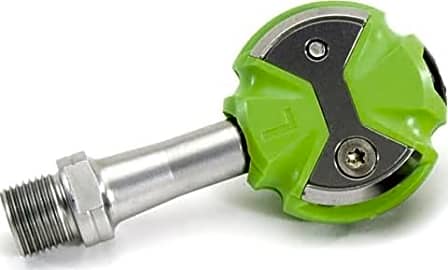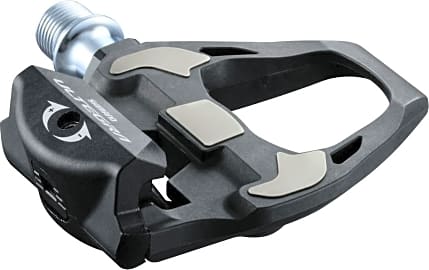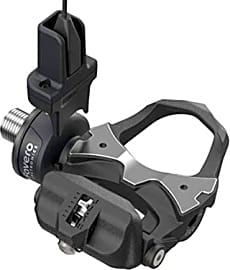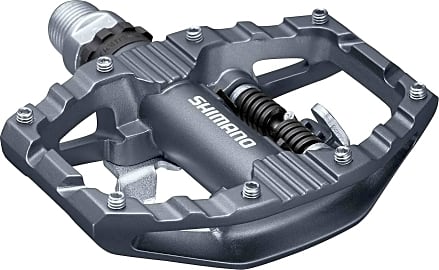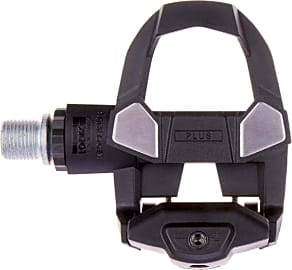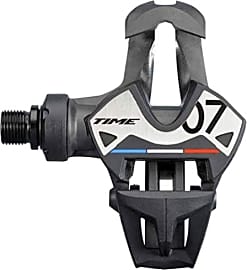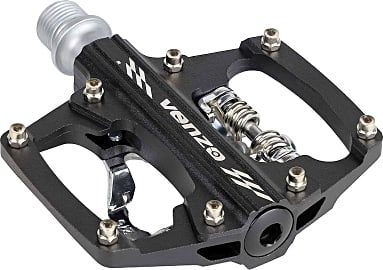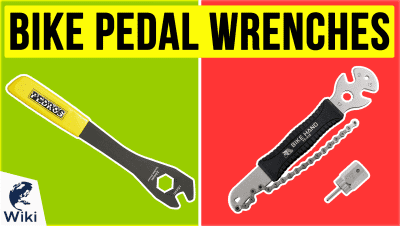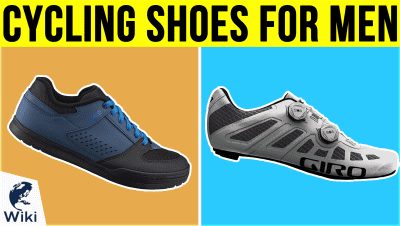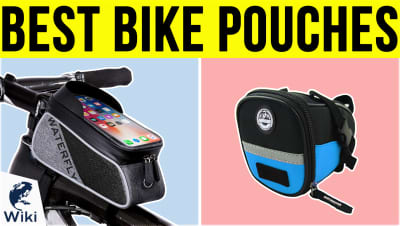The 10 Best Road Bike Pedals

This wiki has been updated 38 times since it was first published in February of 2017. Serious riders know that the more securely your feet connect to the pedals of your road bike, the more power and control you can exert over it. But not every pair achieves that with the same design, and each has its pros and cons. We've rounded up some of the top styles, including those with clips, toe cages and high-friction surfaces, that will help your shoes stay in place mile after mile. When users buy our independently chosen editorial recommendations, we may earn commissions to help fund the Wiki.
Editor's Notes
November 18, 2020:
Finding the right balance between material composition, platform size, and ease of use will ensure the best performance when cycling. Most serious riders prefer a clip-in style pedal as they give increased power and allow the wearer to pedal more fluidly while avoiding ankle, knee, and hip injuries. A regular flat pedal is much easier for short commutes and can be combined with a strap such as those found on the Diamondback Alloy Resin, however, these are bulkier and heavier, but they are also much cheaper as they don't require any special footwear.
In this most recent update, we replaced several options with the latest models and removed some which are no longer available. The Venzo Dual Platform was added as a versatile option similar to the Shimano PD-EH500 SPD. These both feature clips on one side and a flat plate on the other, making cycling in heavy traffic easier or allowing you to use your bicycle with regular footwear if necessary. As an entry-level option, we replaced the Look Keo Classic 2 with the Look Keo Classic 3 Plus. They are also at an affordable price and feature an improved spindle and bearings that provide greater wear resistance and reliability. The updated Time Xpresso 7 is now made from carbon with a hollow axle, making them more lightweight than their predecessors at under 100 grams per pedal. Finally, we added the innovative Wearable4U Favero Assioma, which boast built-in sensors that provide analytics to improve performance, via a downloadable app, with which users can measure things like power levels, cadence, and torque efficiency for each leg.
August 29, 2019:
Choosing the right road bike pedal has a lot to do with your cycling style and habits. For example, if you bike regularly and are dedicated to improving your speed and distance, things like weight and aerodynamics will be more important than price. On the other hand, casual riders may be more willing to sacrifice a few grams here and there or deal with increased wind resistance if it means they can save a few bucks. We did our best to include options well suited to both of these categories of riders, while still always keeping an eye on quality, so even the budget-friendly options should still perform well for the foreseeable future.
When it comes to top-of-the-line options, the Shimano Dura-Ace 9100, SpeedPlay Zero, and Time Xpresso 12 Titan are leading the pack. Of these, the Dura-Ace 9100 offers the most well-balanced performance, the Zero offers the most versatility, and the Time Xpresso 12 Titan offers the lightest weight. We will admit though, that for all but the most serious of riders who are really in tune to the slightest advantage a component offers, the Shimano Ultegra PD-R8000 would probably be just as satisfactory and cost a good bit less than the Dura-Ace 9100.
While on the topic of Shimanos, we want to take a minute to point out the Shimano A530 SPD. Though we feel they lag behind the Dura-Ace 9100 and Ultegra PD-R8000 in terms of performance, they offer more versatility than either of those due to their dual-sided platform. On one side, there is a cleat connection, and the other offers a flat surface for use with regular shoes. So if you like to periodically ride around town without having to worry about clicking in, these are a smart choice.
On the budget side of things, we have the Look Ko Classic 2 and Diamondback Alloy Resin. The former is a good entry-level option for someone who is just getting into using cleats and isn't 100-percent sure they will enjoy that style of riding, while the latter have the old-school toe cage that can be used with any type of shoe and allow for quick entry and exit.
Whichever pair you decide to buy, make sure you have a good pedal wrench around to make changing out your old ones easier when the new set arrives in the mail.
Special Honors
Speedplay Nanogram Zero If you are looking for a seriously high-quality race day pedal, these should be on your list. They feature similar design characteristics to the rest if the Zero line, but have been re-engineered for weight reduction and increased performance. The pedals are an impressively light 65 grams each, and the cleats come in at just a hair over 44 grams each. speedplay.com
Assioma Duo If you are training for a race, you'll need advanced tools to help you increase your performance, which is exactly what the Assioma Duo power meters are. They install just like any other pair, but use a variety of metrics to measure your leg strength, riding efficiency, cadence, and more to give you a better picture of your current levels, and also help you determine what areas to work on improving. They transfer data via Bluetooth, are completely waterproof, and come with a two-year warranty. cycling.favero.com
Why New Road Bike Pedals Are A Smart Investment
I didn’t know it at the time, but the pedals on this particular bicycle needed to be replaced.
When I was 16, I inherited an old road Peugeot from the 1980s that was in surprisingly good shape. Of course, it was a heck of a lot heavier than pretty much any new model on the market, but I didn’t have a bike to begin with, and I certainly didn’t have the money to invest in anything new.
I rode that bike everywhere for about a decade, taking it off to college and eventually to grad school. When I moved to Philadelphia some years later — an unexpectedly bike-friendly city — I began to see the need to take care of some of the bike’s most weathered parts. I rewrapped the handles, which had all but completely decayed; replaced the pouch at the front of the handlebars to protect my belongings from inclement weather; and I got new hybrid tires that could handle light off-road conditions and poorly paved roads alike.
I didn’t know it at the time, but the pedals on this particular bicycle needed to be replaced. I learned this about halfway along a 30-mile round trip when one of the pedals all but snapped off, its joint bent completely out of shape. I tried to pedal mostly with the left side, putting only guiding pressure on the damaged pedal, and I made it the rest of the way to my destination, knowing there was a nearby train I could take back into town.
According to the train company's website, it left the station in about 10 minutes. I pushed that busted pedal as hard as I could trying to make it to the station, but it completely broke off about a quarter mile from the stop, and I missed the train, another not coming for more than two hours. The 14 miles back to Philly were long, slow, and awkward, and I was sore and more than a little frustrated by the time I got home, but I got new pedals the very next day.
There’s a good chance that the bike you’re riding isn’t about to have its pedals break off, but that doesn’t mean it isn’t worth investigating a good replacement for what you currently have. It may be a matter of updating old hardware, or it could be that you want a more or less secure hold for your foot. Whatever the ultimate reason, a new set of pedals can improve your time on the back of your favorite cycle, and it might just save you from a long, difficult journey.
What Kind Of Road Bike Pedal Is Right For You?
There are basically three types of pedal that you can install on a road bike, each of which offers different degrees of security and a different pedaling experience. Which one is right for you will have to do with everything from where you typically ride to the specific nature of your road bike.
The three basic types of pedal are standard, which look like the pedals you had on any of the bikes you rode growing up; strapped, which provide a small, easy-to-tighten strip of nylon that secures your foot into a toe hold; and clip-ins, which attach to the bottoms of shoes designed for riding. Each type has its advantages and disadvantages, and you may need to experiment with several styles before you find what you like.
Which one is right for you will have to do with everything from where you typically ride to the specific nature of your road bike.
Generally speaking, standard pedals are the safest because if you get into any kind of accident, you won't be attached to the bicycle, allowing you to roll safely away from the accident and the frame of a tumbling bike. They also require no additional hardware or setup, so you can hop on and off your bike at a moment’s notice. That makes this style ideal for riders in densely populated cities that might not be friendly to bicyclists.
The downside, however, is that there is no way for you to use your hamstrings to power the back half of your pedaling stroke; you can only generate power when pushing the pedal forward and downward.
Strapped pedals are a nice mid-ground between standard and clip-in models. They offer riders the ability to add power to their backward and upward strokes, but they don’t permanently lock you into the pedals, so there’s a reduced risk of injury during an accident. For many riders, however, the middle ground isn’t quite as good as either polar option, especially for riders of fixed-gear bikes, who far prefer clip-in pedals.
A clip-in pedal will give riders a complete power profile in their stroke, and will let riders of fixed-gear bikes more easily balance when stopped at a red light or stop sign. Given the fact that they keep you locked to the bicycle, however, they’re best suited for more peaceful environments like the countryside or dedicated bike trails.
Other Essential Biking Accessories
In addition to upgrading your pedals, there are some other things you can buy that will take your riding experience up a level or two. Many of these items are designed to keep you safer while you’re out riding.
You’ll find models on the market outfitted with everything from LED light strips to turn signals that connect to a handlebar-mounted Bluetooth controller.
For starters, it’d be smart to invest in anything that can increase your visibility, especially if you’re riding along a road with other vehicles. Reflective vests and arm bands are a great place to start, as they scatter light in every direction and can be seen from a good distance away.
If you do find yourself in a crash of some kind, you’ll want to make sure you brought your helmet with you. A good helmet can literally be the difference between life and death if the worst happens on the road, but many modern smart helmets can help prevent those accidents from happening in the first place. You’ll find models on the market outfitted with everything from LED light strips to turn signals that connect to a handlebar-mounted Bluetooth controller.
Lastly, it’s always a good idea to have a patch kit of some kind with you. If you have a flat and you’re particularly far from home, the walk can be too much to bear. A patch kit is a lightweight, inexpensive addition to your kit that will get you back on the road in no time.



